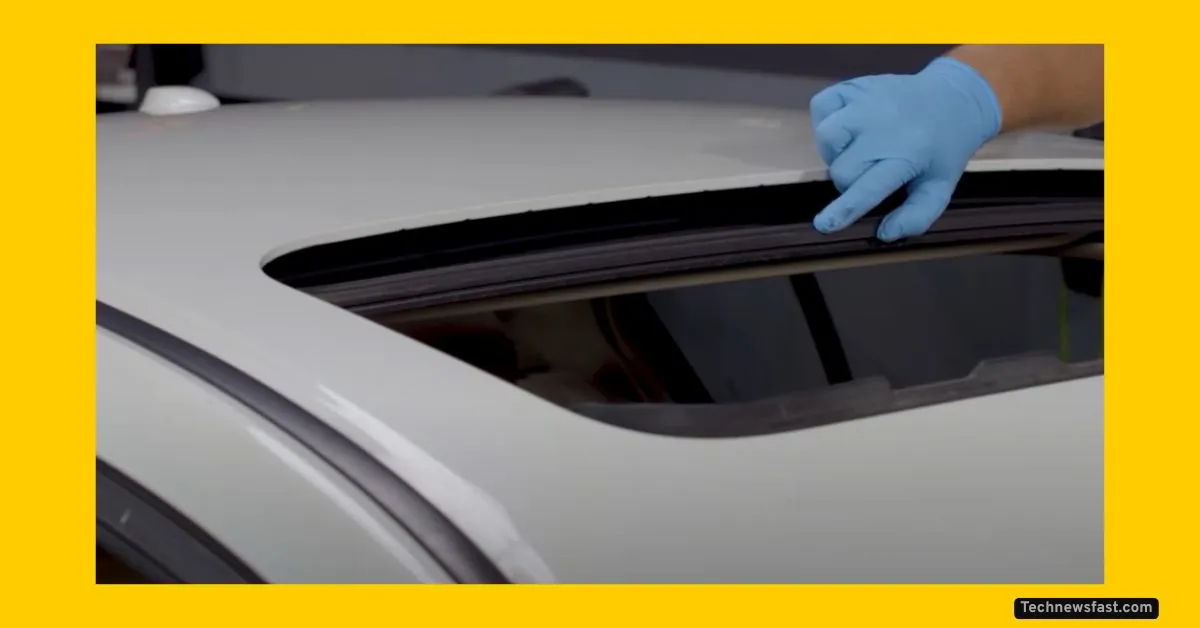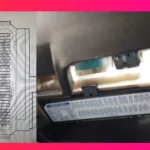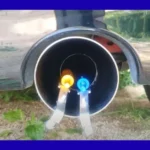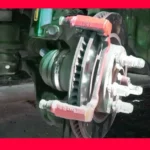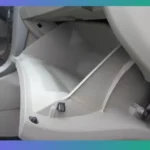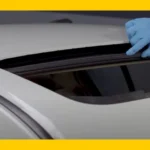Water inside your car’s headliner is never a welcome sight. If you own a Ford Expedition, Explorer, Mountaineer, or a similar model and find yourself chasing a stubborn leaky sunroof, you’re not alone. Many Ford owners keep flushing their drain tubes, only to find soaked headliners and dripping water long after the rain stops. Is it always the drain tubes? Not always.
Let’s break down why your sunroof might be leaking, how to spot the real problem, and what you can do right now for a temporary fix for leaking sunroof problems—plus steps for a permanent repair and prevention tips.
Understanding Sunroof Leaks in Ford SUVs
For years, drivers have blamed clogged drain tubes for water leaks from the sunroof. While blocked tubes do cause leaks, there’s another, less obvious culprit: a design flaw in the sunroof tray and track area that lets water bypass the normal drainage path, even if everything looks clear.
If your sunroof is leaking but your drain tubes seem fine, you’re likely running into a common Ford problem, especially in vehicles like the 2000+ Ford Expedition, Explorer, and Mountaineer. Here’s what many owners experience:
- Drain tubes are clear, and water flows through without backing up.
- The drain pan under the sunroof looks dry.
- The headliner and roof pillar covers are soaked after rain.
- Water leaks originate near the sunroof track, not near the drains.
It’s baffling at first but makes sense once you know what’s happening above your head.
Step-by-Step Visual Leak Diagnosis: What to Check
Let’s walk through how to diagnose the real leak:
- Inspect Drain Tubes
- Unplug and clear both front sunroof drain tubes.
- Pour water down the visible drain pan; check for smooth drainage.
- Check for Moisture in the Headliner
- Reach up near the front of the headliner on both sides.
- If wet, even though the drain pan is dry, the trouble isn’t in the obvious places.
- Remove Small Components
- Take off A-pillar trim: Remove the grab handle (if equipped), then unscrew the cover using a 5mm socket or suitable tool from a basic mechanic tool set.
- Drop the headliner slightly: this gives you access to where the sunroof track meets the roof.
- Simulate Rain with Water
- Pour a cup or bottle of water along the sunroof channel.
- Watch where water travels. Look for drips or flow under the sunroof track near the joints and rails.
- Track the Leak
- Closely watch underneath the moveable sunroof cover track.
- Water may stream past a cracked seal or dried-out glue, bypassing the drain and running right into the headliner.
Tip: The leak often occurs where the track cover attaches with rivets or adhesive, an area prone to factory sealant breakdown.
The Real Leak: How the Sunroof Track Fails to Seal
So, what’s actually happening up top? Here’s where design lets you down.
Seal Failure
The sunroof has a sliding cover and a moveable glass panel. They travel on a track, which should channel water toward the drain tubes. But over time:
- The rubber sunroof seal dries out, losing flexibility.
- The factory sealant (often a basic glue or silicone) under the sunroof track hardens and cracks.
- Water sneaks under the track instead of following the intended path to the drain.
Water Backup
During heavy rain, water pools in the sunroof tray. If too much collects, or the seal under the track is weak, water moves sideways—crawling under the track and dripping straight into the headliner. Depending on how your car is parked, it might leak on either side or both.
Partial Fixes
Applying a bead of sunroof seal tape or silicone along the visible edge can help as a stopgap, but it rarely solves the issue long-term. The water may still find its way under the track if the underlying seal is gone.
Sunroof seal replacement costs and effective long-term fixes depend on reaching this hidden joint—which means removing parts of the interior.
Temporary Fixes for Leaking Sunroof
Not everyone has the time or tools to dig into their car’s headliner right away. Here’s what you can do to hold off disaster until a repair is possible:
- Seal the glass temporarily: Apply waterproof sunroof seal tape over the closed sunroof where it meets the body. This can stop drip leaks in the short term.
- Mark the controls: Put a small piece of tape over the sunroof switch inside the cabin. This reminds you not to open the sunroof until all tape is removed.
- Monitor for more leaks: After rain, check for new water spots inside and reapply tape as needed.
These temporary fixes for leaking sunroof issues are quick, cheap, and much better than sopping up water after every storm, but they don’t address the root problem.
The Permanent Repair: How to Seal Sunroof Permanently
If you’re ready for a durable solution, you’ll need to access that hidden track and reseal it. Here’s a practical guide:
- Remove Interior Trim and Headliner
- Take off grab handles and A-pillar trim (save all fasteners).
- Lower the headliner enough to see the sunroof tray and track joint. This step can be tedious and might take a couple of hours if you’re new to it.
- Find the Leak Point
- Look for gaps or dried sealant under the sunroof track cover.
- Water trails or clean “wash” marks help pinpoint the exact leak.
- Detach the Sunroof Track Cover
- Drill out any factory rivets or release small fasteners holding the metal or plastic cover to the tray.
- Gently lift the cover—don’t bend or break the track.
- Clean Away Old Sealant
- Use a scraper or plastic blade to remove cracked glue or old silicone.
- Dry the area thoroughly with a towel.
- Apply the Best Sealant for Car Sunroof
- For top results, choose a flexible, waterproof automotive sealant or silicone rated for outdoor use.
- If you want to know how to seal a sunroof with silicone, run a continuous bead beneath the track, press it back into place, and make sure all gaps are filled.
- Reattach the Track and Test
- Rivet or screw the track cover back down.
- Wipe away excess sealant before it cures.
- Reinstall all trim and the headliner, then gently test with more water.
The seal of a leaking sunroof can range from the price of a tube of silicone (less than $20) if you do it yourself to $300–$700 if you hire a professional for sunroof seal replacement and labor. Actual sunroof leak repair cost varies by region and shop.
Preventing Future Sunroof Leaks
Short steps can save big headaches years down the road. Here’s a simple checklist:
- Keep drain tubes clear by flushing gently with water every few months.
- Check your sunroof’s weather seals for cracks, dryness, or gaps; replace as needed.
- Avoid strong cleaners or sharp tools on sunroof seals.
- After every heavy rain, feel the headliner for damp spots—find early leaks before they worsen.
- Store your car under cover or in a garage when possible if you see repeated signs of water ingress.
- If you already fixed your leak, test your work by pouring water around the sunroof area before reassembling everything.
Conclusion
Don’t let a sunroof leak ruin your drive. If you’ve already flushed the drain tubes and found watermarks on your headliner or A-pillar, check the sunroof track and tray for hidden seal failures. Many Ford SUVs face this, but once you know what to look for, the fix is straightforward.
Read also.
